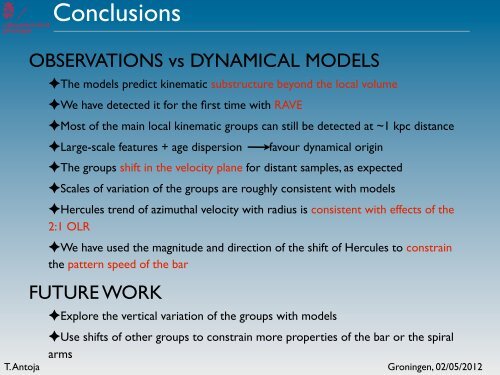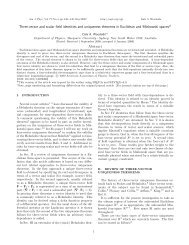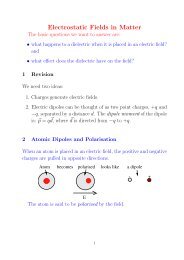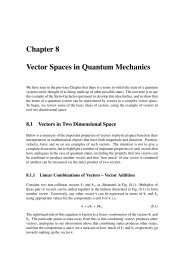Modeling the Milky Way disk dynamics
Modeling the Milky Way disk dynamics
Modeling the Milky Way disk dynamics
- No tags were found...
Create successful ePaper yourself
Turn your PDF publications into a flip-book with our unique Google optimized e-Paper software.
ConclusionsOBSERVATIONS vs DYNAMICAL MODELS✦The models predict kinematic substructure beyond <strong>the</strong> local volume✦We have detected it for <strong>the</strong> first time with RAVE✦Most of <strong>the</strong> main local kinematic groups can still be detected at ~1 kpc distance✦Large-scale features + age dispersionfavour dynamical origin✦The groups shift in <strong>the</strong> velocity plane for distant samples, as expected✦Scales of variation of <strong>the</strong> groups are roughly consistent with models✦Hercules trend of azimuthal velocity with radius is consistent with effects of <strong>the</strong>2:1 OLR✦We have used <strong>the</strong> magnitude and direction of <strong>the</strong> shift of Hercules to constrain<strong>the</strong> pattern speed of <strong>the</strong> barFUTURE WORK✦Explore <strong>the</strong> vertical variation of <strong>the</strong> groups with models✦Use shifts of o<strong>the</strong>r groups to constrain more properties of <strong>the</strong> bar or <strong>the</strong> spiralarmsT. Antoja Groningen, 02/05/2012
















